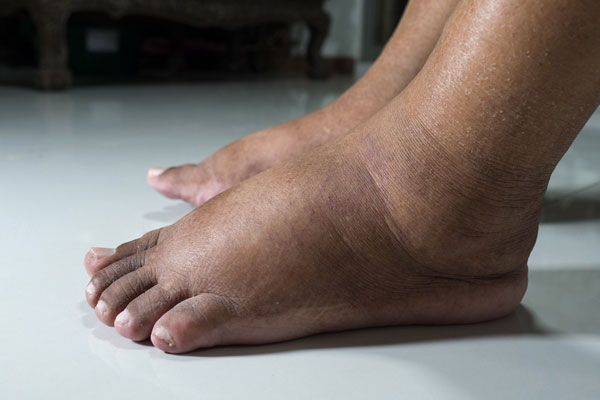
Kampala, Uganda | THE INDEPENDENT | Only patients and possibly their immediate family members know that there is ‘an elephant in the room’ of Uganda’s healthcare system when it comes to the cost of treating diabetes.
The cost is particularly alarming for type 2 diabetes mellitus (T2DM) which affects about 4.2% of Uganda’s population. The hidden costs of caring for this disease have finally been unearthed by a study conducted by the Economic Policy Research Centre (EPRC) a Makerere University-based think tank.
The study by renowned researchers led by Dr. Madina Guloba. Other researchers include Blessing Atwine and Pauline Nakitende. The study titled “Economic burden of type 2 diabetes Mellitus in Uganda: A cost-of-illness analysis” has finally exposed the hitherto neglected financial side of care for this type of diabetes.
The study whose findings were published in August aimed at estimating the total direct economic costs of managing and treating Type 2 diabetes mellitus (T2DM) in Uganda from both a public and private healthcare perspective.
According to the study, the cost of care for people with type 2 diabetes accounts for 13% of the Ministry of Health budget. The Ministry was allocated UGX3.331 trillion in the financial year 2021/2022. In 2022, up to UGX 2.2 trillion was spent, on medication, treatment, and management of complications related type 2 diabetes.
“Households bear the largest financial burden (UGX 1.7 trillion). On the other hand, government expenditure of UGX435 billion on diagnosed T2DM patients accounted for 13% of the MoH budget,” read part of the report The researchers found that both the government and households continued to bear the burden of diagnosed Type 2 diabetes.
“The government and households spent about UGX 2.2 trillion on the 676,900 diagnosed T2DM patients in public and private health facilities. Out of this amount, the government only spent UGX435.8 billion. This implies that most patients meet the cost burden of the disease out-of-pocket, which affects expenditure on other aspects of life,” said Guloba and team.
They further noted that if all those in need of care (diagnosed and undiagnosed) were to be treated, it would cost the country about UGX 4.2 trillion, about 8.7% of the 2022/23 total national budget annually. According to available literature, this type of diabetes is a lifelong disease that keeps a patient’s body from using insulin the way it should.
People who are middle-aged or older are most likely to get this kind of diabetes. It used to be called adult-onset diabetes or diabetes mellitus. But type 2 diabetes also affects kids and teens. Figures from 2019 indicatedType 2 diabetes(diagnosed and undiagnosed) affected 4.1% of the population in Uganda. It was found that out of all T2DM cases, only 0.4% had been diagnosed, treated, and under control.
Many are living in ignorance
From the research findings, 6 out of 10 Ugandans live in ignorance of what ails them and are likely to present late with complications that worsen their quality of life. The only way to ensure that the disease doesn’t progress to type 2, is for everyone to get regular checks for early diagnosis and treatment.
For type 2 diabetes patients, the researchers found that the single most cost driver was the cost incurred in the purchase of medicines and equipment at both public and private health facilities.
Diabetes is one of the leading causes of blindness, kidney failure, heart attack, stroke, and non-traumatic lower limb amputation in Uganda. According to the International Diabetes Foundation, in 2021, an estimated 716,000 adults in Uganda had diabetes.
About 89% of Ugandans with diabetes are neither on medication nor aware of their status and therefore present to the health system with difficult-to-treat complications.
Higher Costs at private hospitals
From the EPRC study, the costs of treating type 2 diabetes with or without complications are generally higher in private than public healthcare
“For instance, the combined unit cost of medication for only insulin and oral drugs in a private facility is approximately UGX3 million, while it’s about UGX1.3 million in a public facility. Patient visits (consultation and hospitalization) cost about UGX1.4 million in private healthcare, whereas it costs UGX 617,440 in public healthcare facilities. The cost of investigations is about UGX353,000 in a private health facility, while it can be as low as UGX 160,262 in a public health” said the report.
It was noted that the complications such as diabetic eye treatment cost UGX10.1 million in private facilities.
“Yet, in public facilities, it would cost UGX4.6 million. The costliest complication is a kidney transplant at UGX120 million and undergoing Haemodialysis (UGX14-31 million), depending on the health care provider. The care is only provided privately for kidney transplants and not in Uganda”
In 2019, another study titled “Quality and barriers of outpatient diabetes care in Rural Health Facilities in Uganda – a mixed methods study” observed that despite the increasing burden of diabetes in Uganda, little is known about the quality of type 2 diabetes mellitus (T2DM) care especially in rural areas. Poor quality of care is a serious limitation to the control of diabetes and its complications. The study was conducted by Catherine Birabwa, Mulekya F Bwambale, and Roy Mayiga.
They found that the most common cross-cutting barrier in the delivery of diabetes care was poor availability of diagnostic/monitoring equipment and essential medicines.
According to the researchers, all the health workers that were interviewed complained of recurrent stockouts of type 2 diabetes drugs and diagnostics, especially test strips, which they felt contributed to poor management of patients and overall service delivery.
Symptoms of Type 2 Diabetes
Some of the signs and symptoms of type 2 diabetes include Being very thirsty, Peeing a lot , blurry vision, fatigue or feeling worn out, wounds that don’t heal, Yeast infections that keep coming back, Feeling hungry, Weight loss without trying and getting infections among others.
****
URN
 The Independent Uganda: You get the Truth we Pay the Price
The Independent Uganda: You get the Truth we Pay the Price



